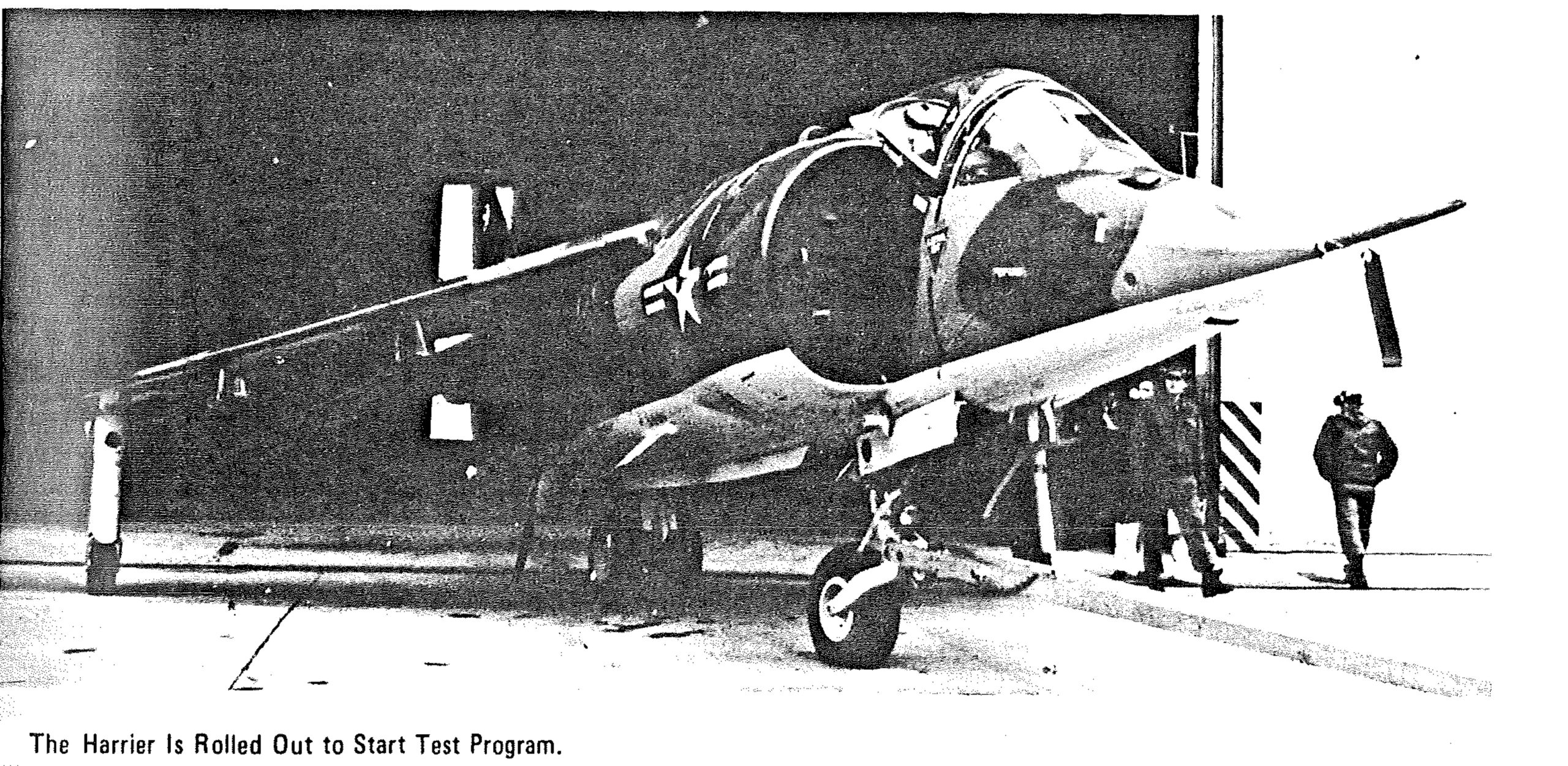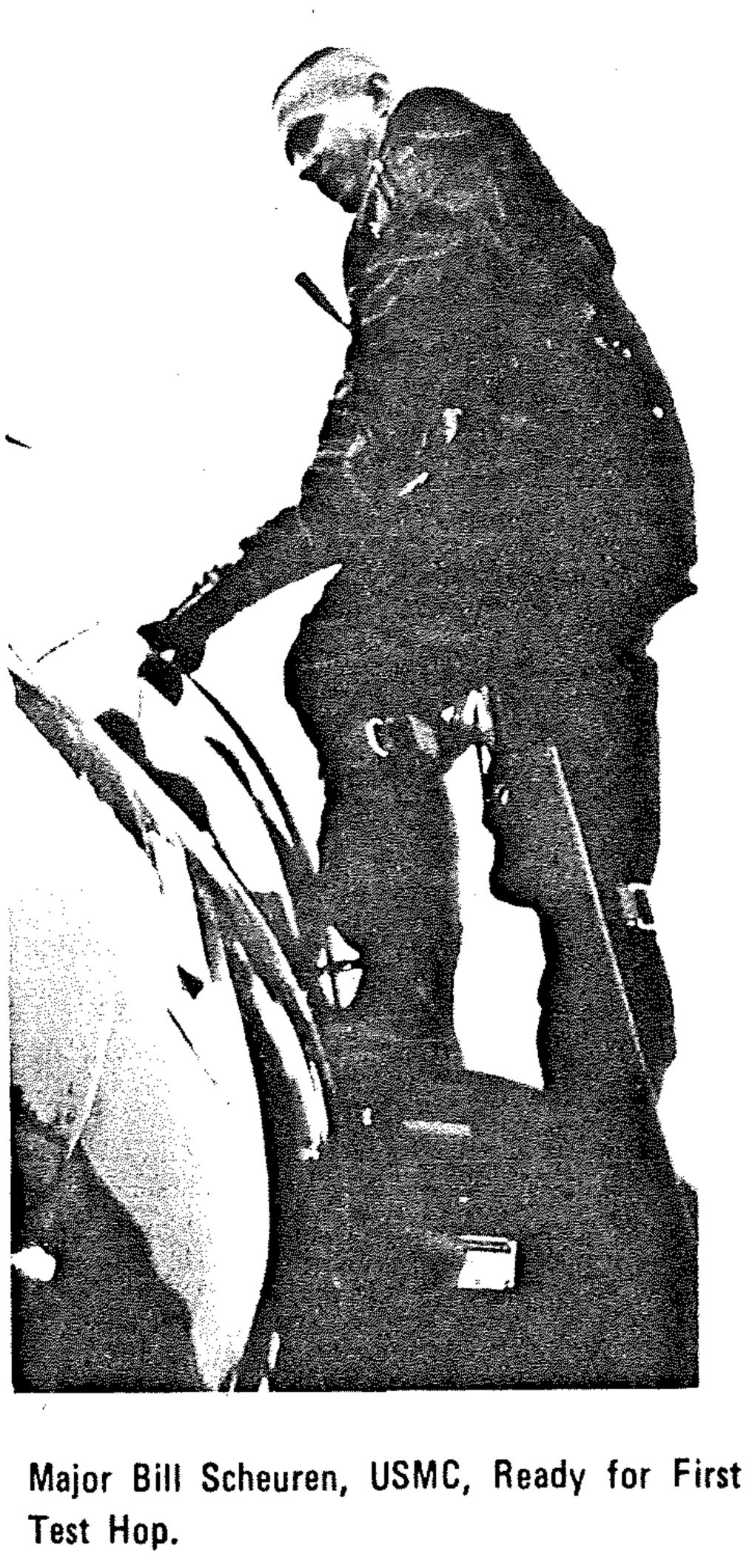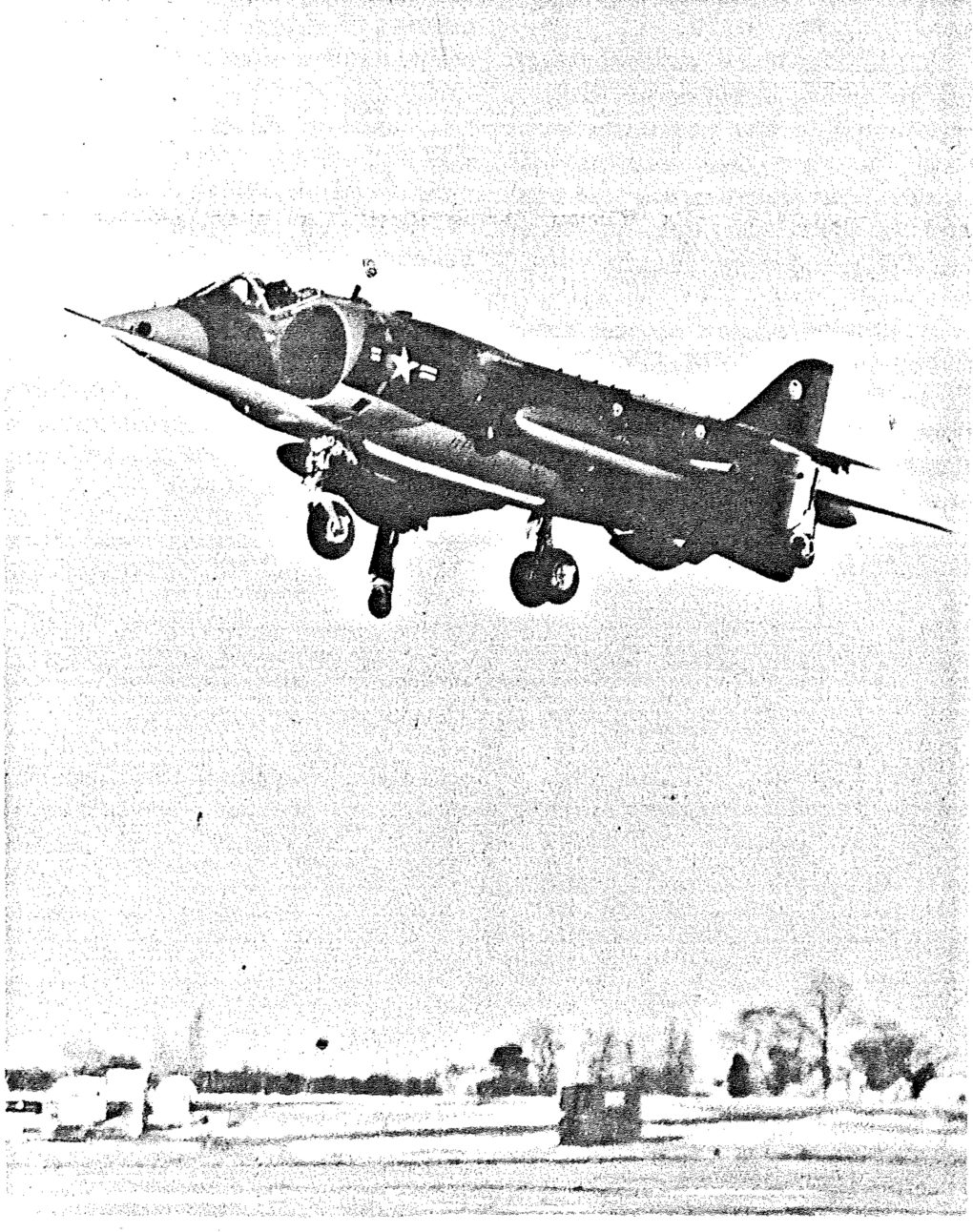
This article first appeared in the April 1971 Flight Test News.
Formal Board of Inspection and Survey (BIS) trials have begun at the Naval Air Test Center for the Marine Corps’ AV-SA Harrier-the only operational jet in the world with V/STOL (vertical and short takeoff and landing capability.)
The first of the compact attack jets to arrive at Patuxent River is undergoing service suitability tests. Over the next two and one-half months, four Harriers will be examined for their flying quality, carrier suitability, and weapons suitability.
Arriving aboard an Air Force C-133 the evening of Jan. 25, the first Harrier was reassembled in three days and made its first test flight on January 29. Subsequent flights have been made daily.
Flights of the single-seat, close air support jet are generating much interest at Pax River, since the Harrier can take off or land vertically. It also gets wide-eyed stares of disbelief when on passes across the field it comes to a dead stop, makes a 90-degree turn, then zooms off in another direction.
Another shocker even for the aviation oriented personnel at Patuxent River is a look at the Harrier as it hovers as effortlessly as a helicopter.
The hover and vertical takeoffs and landings are achieved by rotating the Rolls-Roycle Bristol Pegasus engine’s four jet exhaust nozzles downward. After the Harrier is airborne, the pilot slowly rotates the nozzles to a rearward position to accelerate to conventional flight.
Attitude control of the Harrier during landing, hovering and slow flight operation is provided by a jet reaction control system using air drawn from the engine compressor and ducted to shutter valves at the extremities of the aircraft.
Downward blowing valves at the nose and tail provide pitch control. Laterally-oriented valves at the tail provide yaw control, and up- ward and downward valves at each wing tip give roll control.
As the engine exhaust nozzles are directed rearward and airspeed increases, compressor air ceases to flow to the shutter valves and conventional aerodynamic controls take effect. The conventional controls are mechanically linked to the shutter valves at all times.
During development trials, the Harrier attained speeds of 625 knots and exceeded Mach 1 in a shallow dive. It has operated from grass and dirt strips and has landed and taken off from helicopter platforms onboard ship.
While the Harrier is unique in its ability to operate vertically, it is often practical to use short ground rolls to gain the advantage of aerodynamic lift. This permits increased fuel and ordnance to be carried, resulting in greater range and firepower.
The tradeoff for a ground roll approximates one gallon of fuel or its equivalent in ordnance for every foot of ground roll. For example, the Harrier’s payload could be doubled by using its short takeoff capability on an unpaved strip of less than 1,000 feet in lieu of the vertical takeoff.
The British government spent 10 years in research and development of the V/STOL. Designed and developed by Hawker Siddeley Aviation Limited, the Harrier was introduced into military service by the Royal Air Force in April 1969 and was deployed with NATO forces.
The Marine Corps took delivery of the first Harrier in formal ceremonies on Jan. 6.


This article first appeared in the April 1971 Flight Test News.
One thought on “Harrier Starts Bis Trials”
Comments are closed.